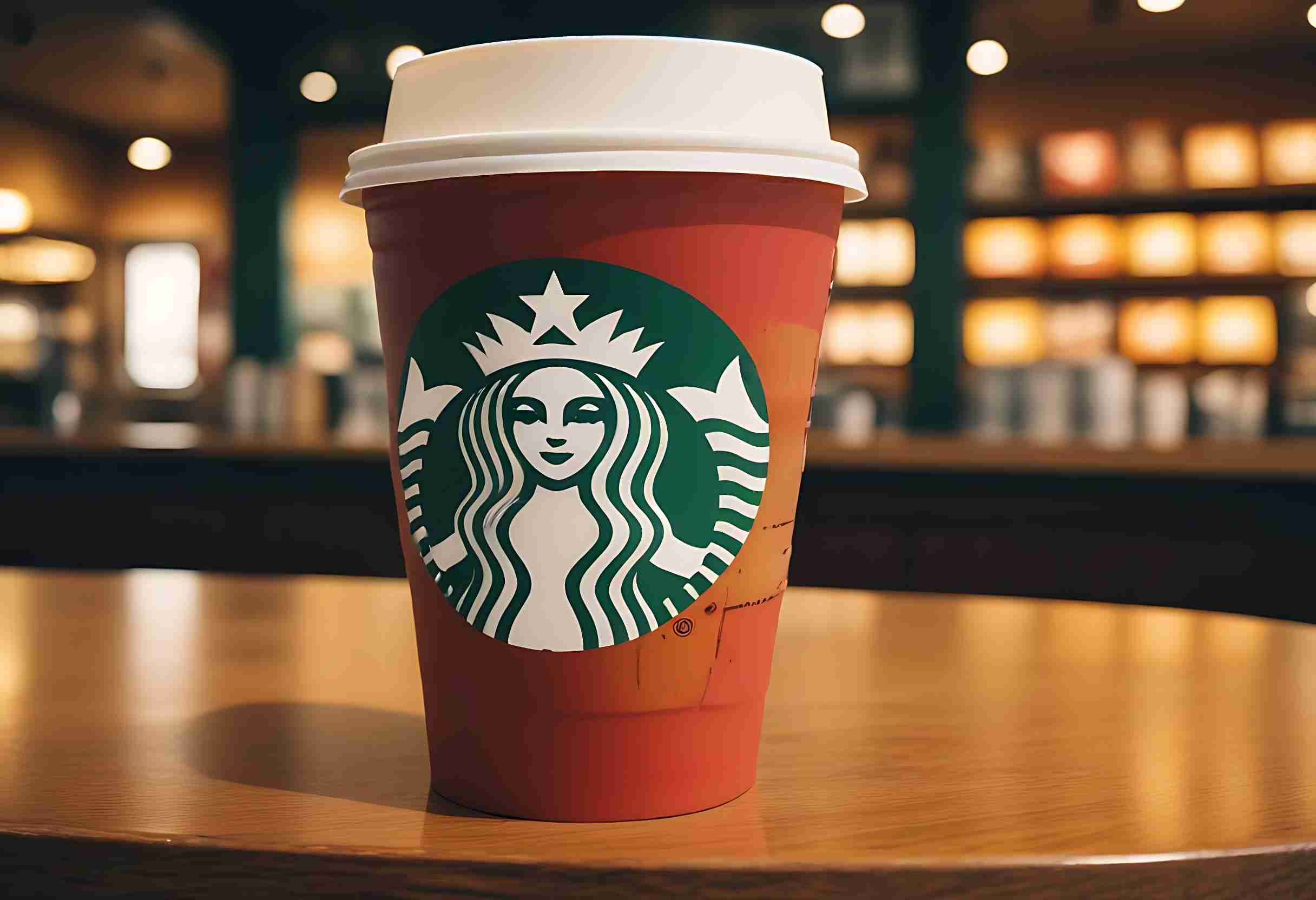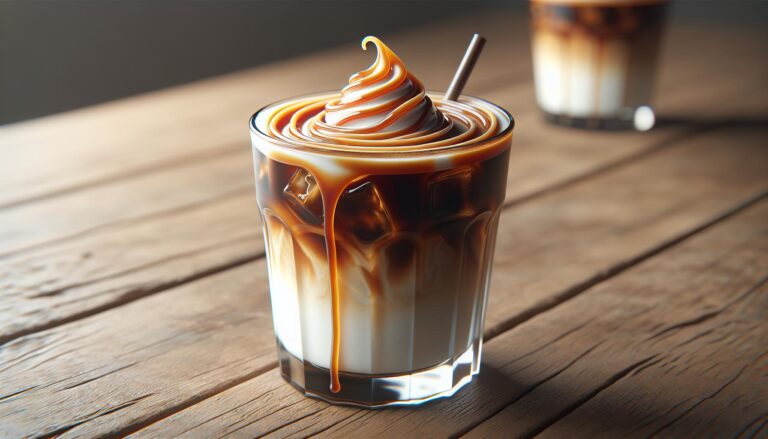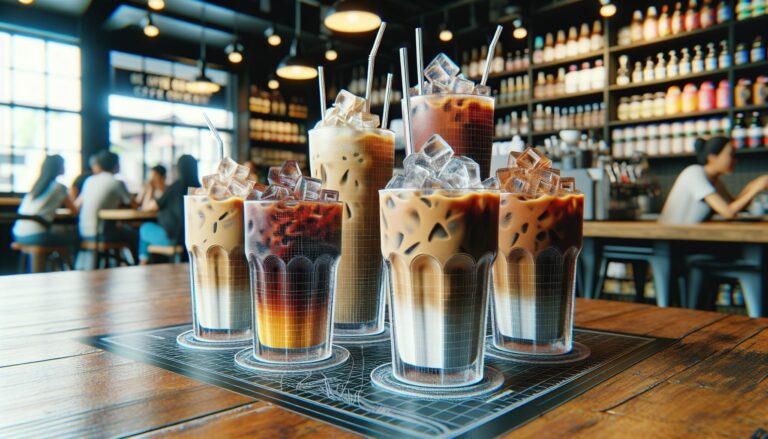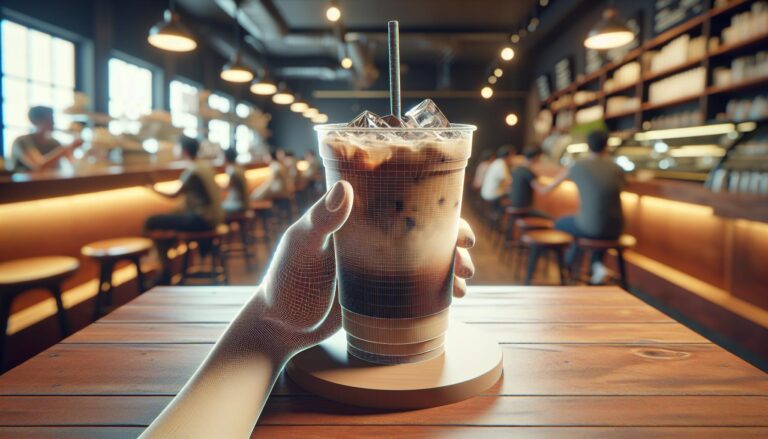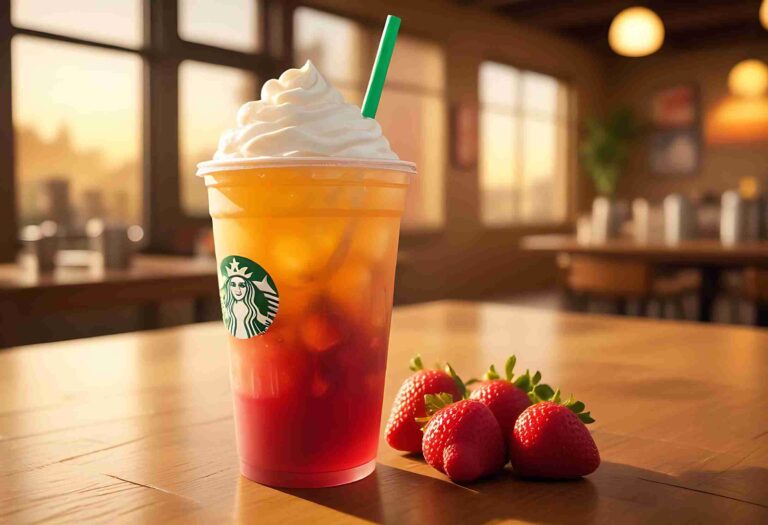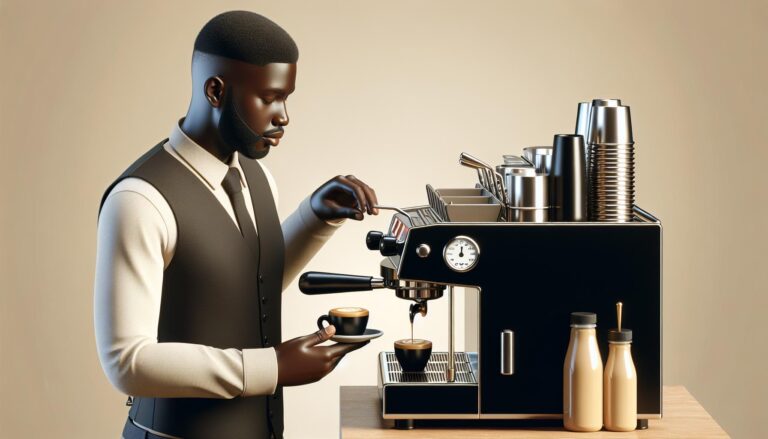Starbucks Espresso Caffeine Content: How Much Caffeine is in Your Favorite Drink?
How much caffeine is in Starbucks Espresso? A single shot of Starbucks Espresso contains approximately 75 milligrams of caffeine. This concentrated dose makes it a popular choice for a quick energy boost.
Starbucks espresso is enjoyed by people around the entire world, symbolizing its global reach and popularity.
In this article, we will explore the caffeine content of Starbucks espresso, helping you make informed choices about your favorite beverages.
From single shots to complex concoctions, understanding the caffeine levels can help you enjoy your coffee experience to the fullest.
Let’s explore the details and demystify the caffeine content in your Starbucks espresso.
Key Takeaways
- Caffeine Content of Starbucks Espresso: A single shot of Starbucks espresso contains approximately 75 mg of caffeine. Double shots (Doppio) have 150 mg, triple shots contain 225 mg, and quad shots offer 300 mg.
- Factors Influencing Caffeine Levels: The caffeine content varies based on the bean source, type, roasting process, and serving size. Starbucks uses high-quality Arabica beans and specific roasting techniques to achieve its signature taste.
- Comparison with Other Beverages: A single espresso shot has less caffeine compared to some other Starbucks drinks, such as an 8 oz Pike Place Roast (155 mg). However, a 16 oz Grande Caffe Americano contains 225 mg, equivalent to three espresso shots.
- Health Implications: Caffeine boosts alertness and concentration but can cause side effects like insomnia or jitteriness when consumed in high amounts. Pregnant women should limit caffeine intake to 200 mg per day.
- Customization Options: Starbucks offers decaf espresso shots with about 3 mg of caffeine for those seeking lower caffeine intake. You can also customize your drink’s strength and flavor with additional shots, flavored syrups, and various milk options.
Understanding Starbucks Espresso Caffeine Content
Starbucks offers a wide range of espresso drinks, each with varying caffeine content. Understanding these levels helps manage your intake and make informed choices.
What Is Espresso?
Espresso is a concentrated coffee brewed by forcing hot water under pressure through finely ground coffee beans.
It’s the base for many popular drinks like lattes, cappuccinos, and macchiatos. A standard shot of Starbucks espresso typically contains about 75 mg of caffeine, though a standard single shot of espresso typically has around 63 mg of caffeine, depending on factors such as the specific coffee shop, brewing process, and type of coffee beans used.
How Starbucks Espresso Stands Out
Starbucks espresso stands out for its unique blend of high-quality Arabica beans and precise brewing methods.
The company uses a well-balanced blend to ensure a consistent, rich flavor. Different espresso-based drinks at Starbucks have varying caffeine content:
- Solo (Single Shot): 75 mg
- Doppio (Double Shot): 150 mg
- Triple: 225 mg
- Quad: 300 mg
By knowing these values, you can choose the right espresso drink to match your caffeine needs.
Starbucks consistently delivers robust, flavorful espresso options tailored to your personal taste and caffeine preference.
Some customers, like actor Pedro Pascal, order their Starbucks espresso with six shots in a venti cup with extra ice. This trend has gained attention on TikTok, with users trying the drink and sharing their reactions.
While the high caffeine content can be intense, it’s important to consider individual sensitivity and the FDA’s recommended daily caffeine limit.
Also Read: Starbucks Caffeine Content
Factors Influencing Caffeine Content in Starbucks Espresso
Various elements affect the caffeine content in Starbucks espresso. Understanding these factors helps tailor your coffee choice.
Bean Source and Type
The origin and type of coffee beans impact caffeine levels. Starbucks typically uses Arabica beans, known for their smooth flavor and lower caffeine content. Differences in bean varieties cause slight variations in caffeine levels.
Roasting Process
The roasting time and temperature alter caffeine amounts. Darker roasts lose more caffeine during roasting, while lighter roasts retain more.
Starbucks uses specific roasting profiles to achieve its signature taste, which can affect the caffeine content of the resulting espresso.
Serving Size Variations
Espresso shots in different sizes change the caffeine content. A solo shot contains about 75 mg of caffeine in a 1 fl oz serving.
Larger sizes like doppio (150 mg in 2 fl oz), triple (225 mg in 3 fl oz), and quad (300 mg in 4 fl oz) progressively contain more. Choosing the right serving size helps control your caffeine intake.
Also Read: Starbucks Coffee Caffeine Content
Comparing Starbucks Espresso Caffeine Levels
Starbucks espresso drinks come with different caffeine content. Comparing these levels helps make better choices based on personal needs.
With Other Starbucks Beverages
When comparing Starbucks espresso to their other drinks, you’ll see differences in caffeine levels. A single shot of espresso has 75 mg of caffeine.
In contrast, an 8 oz cup of Pike Place Roast contains about 155 mg, almost double the amount in one espresso shot. Regular coffee generally has more caffeine per serving compared to a single shot of espresso.
The popular 16 oz Grande Caffe Americano has about 225 mg of caffeine, made with three espresso shots. Frappuccinos, often seen as a lighter option, can vary greatly.
For example, a Grande Coffee Frappuccino has around 95 mg due to its blend of coffee and milk.
Tea options like the 16 oz Chai Tea Latte carry approximately 95 mg of caffeine, aligning more closely to one shot of espresso.
With Other Coffee Brands
Comparing Starbucks espresso caffeine with other coffee brands reveals interesting distinctions.
For example, Dunkin’s espresso shot offers about 75 mg of caffeine, similar to Starbucks. McDonald’s espresso, in contrast, carries approximately 71 mg, slightly less.
Espresso from independent coffee shops can vary widely, generally ranging from 63 mg to 80 mg per shot.
The consistency in caffeine content among major brands like Starbucks, Dunkin’, and McDonald’s shows standardized serving, aiding in accurately assessing your intake.
By comparing Starbucks espresso caffeine levels with other beverages and brands, you gain clarity on your consumption and can make better choices tailored to your caffeine preferences.
Read Also: Starbucks Double Shot Espresso Caffeine Content
Health Implications of Caffeine
Understanding the health implications of caffeine helps you make informed choices about your Starbucks espresso consumption.
Benefits of Caffeine Consumption
Caffeine improves alertness and concentration. It’s often used in the morning or during work to boost productivity.
Studies suggest it enhances physical performance by increasing adrenaline levels. It’s been linked to potential protective effects against diseases like Alzheimer’s and Parkinson’s.
Possible Side Effects and Limitations
High caffeine intake may cause insomnia, jitteriness, or increased heart rate in some people. It’s essential to monitor your caffeine consumption to avoid these side effects.
The recommended daily limit of caffeine intake is 400 mg for most adults, and exceeding this limit can pose risks, especially for individuals with certain medical conditions or sensitivities.
Pregnant women should limit caffeine intake to 200 mg per day, as excessive caffeine can impact fetal health.
Research shows that regular high doses may lead to dependency or tolerance, requiring more caffeine for the same effects.
Read Also: Starbucks Cappuccino Caffeine Content
How to Customize Your Starbucks Espresso
Customizing your Starbucks espresso lets you control its caffeine content and flavor. Whether you prefer a decaf option or a stronger brew, Starbucks offers several ways to personalize your drink.
Decaf Options
Starbucks provides decaf espresso shots for those wanting lower caffeine. Each decaf shot contains about 3 mg of caffeine compared to 75 mg in a regular shot.
Ask for decaf in any espresso beverage to enjoy coffee without the high caffeine. Opt for a decaf Americano or decaf Macchiato for rich flavors with minimal caffeine.
Customizing Strength and Flavor
Modify your espresso strength by changing the number of shots. A single shot has 75 mg of caffeine, while a double shot (Doppio) has 150 mg. Request extra shots for a bolder taste or reduce them for a milder drink.
To adjust the flavor, add flavored syrups like vanilla, caramel, or hazelnut. Ask for dairy or non-dairy milk options, such as almond or oat milk, to change the texture and taste. For a less bitter espresso, try adding sweeteners like classic syrup or raw sugar.
Conclusion
Understanding the caffeine content in Starbucks espresso drinks empowers you to make informed choices based on your preferences and health considerations.
Whether you’re looking to stay alert with a standard shot or prefer a decaf option, Starbucks offers a variety of ways to customize your espresso experience.
By adjusting the number of shots, adding syrups, or choosing different milk options, you can tailor your drink to perfectly match your taste and caffeine needs.
So next time you’re at Starbucks, you’ll know exactly how to get the perfect espresso to suit your day.
Also Read: Starbucks Espresso Shot Caffeine Content
Frequently Asked Questions
How much caffeine is in a standard shot of Starbucks espresso?
A standard shot of Starbucks espresso contains approximately 75 mg of caffeine.
Can the caffeine content in Starbucks espresso drinks be adjusted?
Yes, you can adjust the caffeine content by requesting extra or fewer shots of espresso, choosing decaf options, or selecting espresso beverages with varying ingredient combinations. For example, Pedro Pascal’s order of an iced ‘quad’ espresso in a venti cup with extra ice, totaling six shots, shows how customers can customize their drinks to achieve a specific caffeine level.
How does Starbucks espresso compare to other beverages in terms of caffeine content?
Starbucks espresso generally has higher caffeine content per ounce compared to many other Starbucks beverages but may vary when compared to other brands’ offerings.
Are there health benefits associated with drinking Starbucks espresso?
Drinking espresso can improve alertness and cognitive function due to its caffeine content. However, moderation is key to avoiding potential health risks.
What are the potential risks of consuming high amounts of caffeine?
High caffeine intake can lead to adverse effects like anxiety, insomnia, digestive issues, and increased heart rate.
What options are available for those who want lower caffeine intake at Starbucks?
Starbucks offers decaf versions of their espresso drinks, which contain significantly less caffeine compared to regular ones.
How can customers customize their espresso drinks at Starbucks?
Customers can customize their drinks by varying the number of espresso shots, adding syrups or flavorings, and choosing from an array of milk options to adjust strength and taste.
Also Read:

